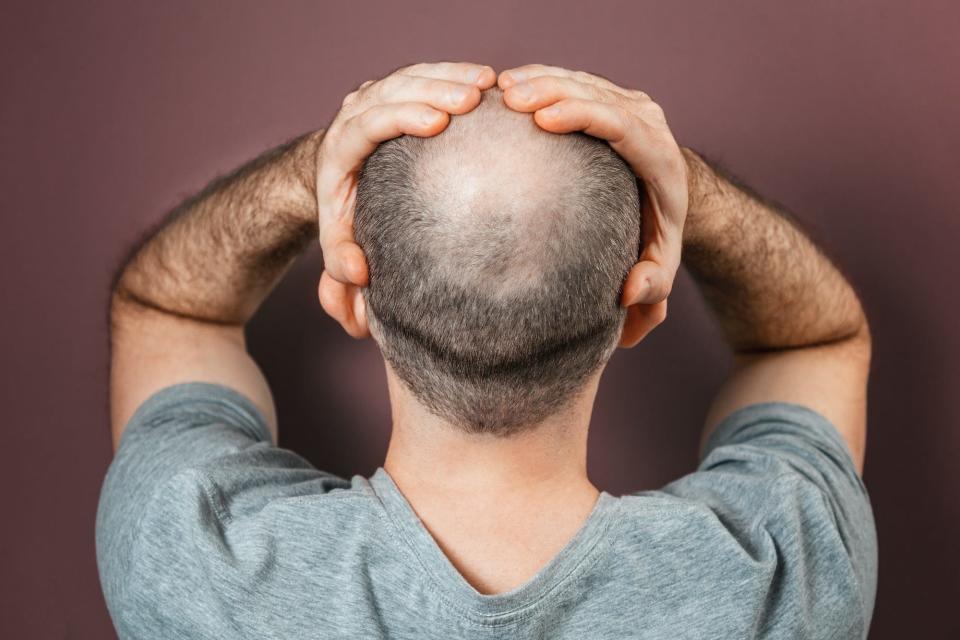Hammerling-Hodgers: Losing your hair? Here are some reasons why and what you can do
Support local journalism. A digital subscription is incredibly affordable and makes you the most informed person around. Click here and subscribe today.

Pete, 49, has a family history of hair loss. His father and grandfather had receding hairlines in their 30s.Tiffany, 53, has been suffering significant stress at work and has noticed is losing clumps of hair from her scalp after a total hysterectomy a month ago.The cause of hair loss dictates what the treatment will be.
Both of these patients are experiencing non-scarring hair loss, but will have different treatment options.
Male-pattern baldness
The most common type of non-scarring hair loss is known as androgenetic alopecia, also known as either male-pattern baldness or female-pattern baldness.
Susan's previous three columns:
Heard of this?Vitiligo is autoimmune disorder that results in white patches on skin
Fix that itch:Winter itch can be annoying but it can also be avoided or treated
Tis the season:Rosacea can flare up during the holidays; here's how to keep it in check
In men, it is characterized by gradual hair thinning of the crown and frontal area of the scalp.
Similarly, hair loss in women mostly affects the crown and frontal areas of the scalp.
In contrast, the hair loss in women is more diffuse than with men. Rarely, do women develop completely bald areas.
Various reasons for female pattern baldness can be related to aging, hormonal changes, a family history of male or female pattern hair thinning or baldness, or certain medications.
Both men and women can use Minoxidil (also known as Rogaine). It is applied directly to the scalp and purchased over-the-counter.
In order to know if it is effective, you’ll need to continue using the Minoxidil for at least four to six months.
It’s important to note that treatment with Minoxidil must be continued indefinitely. If you discontinue using it, then any hair that has been maintained or regrown will be lost.
As with any medication, there are side effects. Topical Minoxidil can cause redness or irritation of the scalp, which results in itching.
Another option for men is Finasteride (brand name: Propecia) which is a prescription that comes as a pill. It can be use dsolo or with Rogaine.
Due to the side effects, most patients that are prescribed Propecia are male, and Finasteride is not safe to use during pregnancy.
In female patients, Spironolactone is a prescription that comes as a pill. Because of its effects on hormones, Spironolactone is not used in men and should not be used during pregnancy.
Stress-related hair loss
A second type of non-scarring hair loss is Telogen Effluvium. It can be associated with stress, medications, thyroid disorders, or after childbirth.
This type of temporary hair loss can be caused by a stressor or change to your body.
Both men and women can develop Telogen Effluvium without a detectable cause between 30 and 60 years of age.
Most commonly Telogen Effluvium appears on the top of your head and it usually will not affect the hairline or cause complete baldness. However, in some severe cases it may affect your eyebrows and body hair.
What is alarming to patients is that Telogen Effluvium has heavy shedding and rapid loss of hair. In contrast, male- and female-pattern hair loss has slow thinning.
Even though Telogen Effluvium will not affect your physical health, it can affect you psychosocially and psychologically.
Finally, alopecia areata is a type of non-scarring hair loss that can range in mild to severe.
Most patients with alopecia areata will only have a few circular patches of hair loss involving the scalp or body. Some others may experience a more extensive involvement of hair loss.
When the cases are mild, traditional treatments such as steroid injections can be given to the areas of hair loss.
With more severe cases, there are multiple options to try such as taking prednisone for six weeks or using a new class of medication called JAK inhibitors. Even though while taking the medication and hair loss has decreased, it will continue to fall out with discontinuation of treatment.
In conclusion, losing your hair can be frustrating and devastating. Even though it's normal and not uncommon to lose hair with age, it can affect your self-esteem and self-confidence when society reinforces the message that a youthful appearance is more attractive with a full head of thick hair. Unfortunately, people experiencing hair loss can struggle with low self-esteem or other body image issues.
If you are struggling with the depression, anxiety or stress of losing your hair, then speak to a health care provider knowledgeable about the diagnosis and treatment of hair loss.
Susan Hammerling-Hodgers, a Member of the National Psoriasis Foundation, is a PA-C (Certified Physician Assistant) and MPAS (Master of Physician Assistant Studies) and works at Brevard Skin and Cancer at the Merritt Island, Titusville and Rockledge offices.
This article originally appeared on Florida Today: Causes and treatments for thinning hair in men and women

